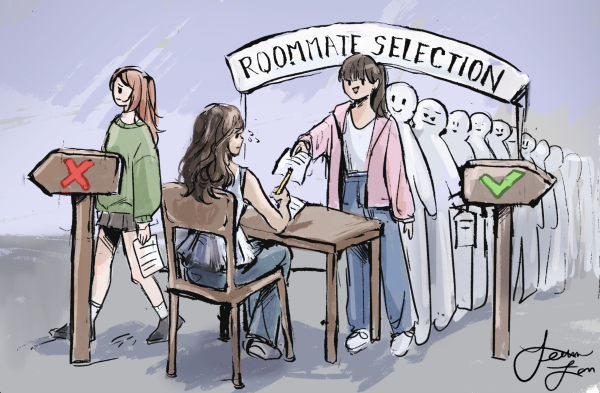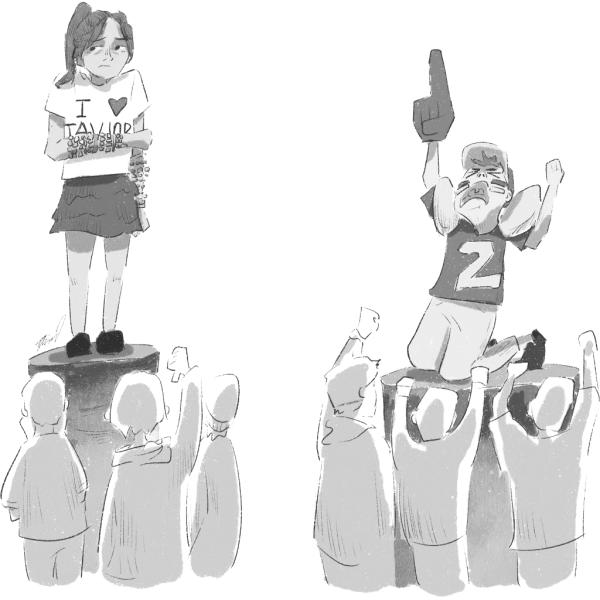E-Bike riders need to be licensed!
March 17, 2023
We’ve all seen them. Armies of e-bikes, whizzing through road lanes in metallic, screaming waves straight out of a war film. Rather than tattooed, grizzled motorists, though, these wheels are manned by fresh-faced children, whooping and hollering as they play chicken with passing cars.
Maybe you’ve been in one of those unlucky cars. Maybe you’ve been ambushed on a sidewalk. Maybe you’ve even ridden an e-bike yourself and felt the adrenaline rush of speed no manual bike could manage to reach. Chances are, though, that no matter who you are, the bikes are just a blip in your day. They’re there, then gone, and all you think of it is “those wild kids.”
There’s more to it than fun times, though. Millions of e-bikes are in use in the USA, and it’s reported that upwards of 250,000 units are sold here every year. Many of their riders are minors, and some of them are as young as 10 years old. When riding e-bikes, these children are dealing with far more power than the manually operated bikes that preceded them, or even mountain bikes. They’re riding vehicles akin to motorcycles, and often in outright dangerous manners. Still, though, their use isn’t regulated, and too many people are paying the price. Action needs to be taken to curb the accidents, injuries and deaths resulting from these bikes, and it needs to be taken now.
There are three recognized classes of e-bikes. Class 1 e-bikes are essentially normal bikes, with an assist that speeds the bike along only when a rider is manually pedaling as well. Class 2 e-bikes include throttle, which allows the rider to control how much boost they get from the engine, which maxes out at 20 mph. Class 3 e-bikes, which many Westview students own, are able to function entirely free of any pedaling and can hit 60 miles per hour on the motor alone. When modified, e-bikes are capable of speeds greatly exceeding this, and Class 3s sit only one vehicle class below mopeds and motorcycles.
Yet, unlike with mopeds and motorcycles, there is no license, registration, or training required to operate any e-bike in California, and there are only two limits on who can ride them. Users of Class 3 e-bikes are, by law, supposed to be at least 16, and wear helmets, but there is no real way to enforce either of these restrictions with the number of children using them and the range of their uses. Unfortunately, many of the children riding these bikes don’t realize what they might be dealing with until it’s too late.
Most e-bike users hop onto their new wheels assuming they’re just bikes for lazy people, and aren’t difficult to handle. Often minors who haven’t handled powered vehicles or ridden on main roads before, they are woefully ill-equipped to safely operate their bikes. Even adults struggle with them. The U.S. National Transportation Safety Board estimated in 2022 that from 2017 through 2021, 119 people died in accidents on e-bikes and e-scooters. Thousands of others have been gravely injured for life in nonfatal accidents. Simon Cowell drew national attention in 2022 when he broke his back after crashing his e-bike near his home. Upper-class, coastal cities suffer the most from e-bike accidents. Carlsbad went so far as to declare a local emergency proclamation after a recent 233% increase in bicycle and e-bike accidents, resulting in 249 accidents and three fatalities in three years.
Taking into account all of the abilities of e-bikes, and the adverse consequences of letting anyone take the handles, it only makes sense that their riders be required to have licenses. E-bike operation isn’t the same as manual bike operation, and teaching riders how to safely steer, navigate inclines or declines, and control speed would prevent crashes to a great extent.
Taking a course on bike lane etiquette and the rules of the road, while not a total solution for adolescent rambunctiousness, still provides riders with valuable knowledge of how to behave while operating e-bikes and acts as a deterrent for things like swerving into main lanes and speeding down crowded sidewalks side-by-side with other–non-motorized–bikes.
Licenses also serve to ensure that e-bike riders are of the appropriate age to be operating e-bikes, and that they will wear helmets, as through the ID aspect of licenses, they will be held accountable for their handling of themselves and their bikes.
E-bikes are not evil. They shouldn’t be banned, nor shamed, nor made any more ridiculously expensive. But they need to be regulated, and their riders need to be licensed. It is unfair and irresponsible to our drivers, to pedestrians, and to our youth that permit free-for-alls on variable, supercharged vehicles. Implementing age restrictions, like those on the Class 3, are a step, but ultimately the only way to ensure that we handle them in a safe manner is to implement a license law.






